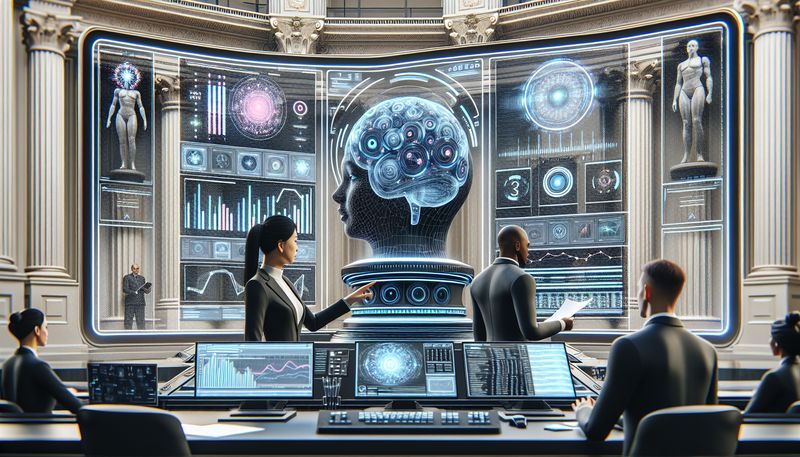Harnessing the Power of AI in Government Services
03 April 24
Artificial Intelligence (AI) has become an integral part of our lives, from virtual personal assistants to smart home devices. AI chatbots, in particular, have significantly transformed the way organizations operate, making data accessibility and retrieval faster, easier, and more efficient. Train Of Thought, a leading provider of AI chatbot solutions, is at the forefront of this digital revolution.
Train Of Thought's AI chatbot uses a customized GPT engine that learns from a vast range of content, such as web pages, PDFs, research documents, and organizational databases. This enables the chatbot to provide precise and intelligent responses, making data more accessible and eliminating the need for complex SQL queries.
One key area where these chatbots are making a significant impact is government services. By integrating seamlessly into live databases and websites, the chatbot continuously refreshes its knowledge to reflect real-time updates. This ensures that information relayed to citizens is timely, accurate, and relevant. It's not just about providing information, though. The chatbot also personalizes interactions based on individual data, enhancing the overall user experience.
Moreover, security is a top priority for Train Of Thought. Advanced measures are in place to maintain the integrity and privacy of sensitive and confidential data, ensuring citizens can interact with government services safely and securely.
Train Of Thought's AI chatbots are also multilingual, enabling them to effectively engage with a diverse audience. This is particularly beneficial in government services, where the needs and preferences of citizens can vastly differ.
In conclusion, Train Of Thought's AI chatbots are transforming the delivery of government services, improving efficiency while ensuring data security. With their ability to adapt and learn from a multitude of data forms, these chatbots are not just a tool, but a dynamic and interactive platform that enhances the way government services interact with and serve their citizens.

